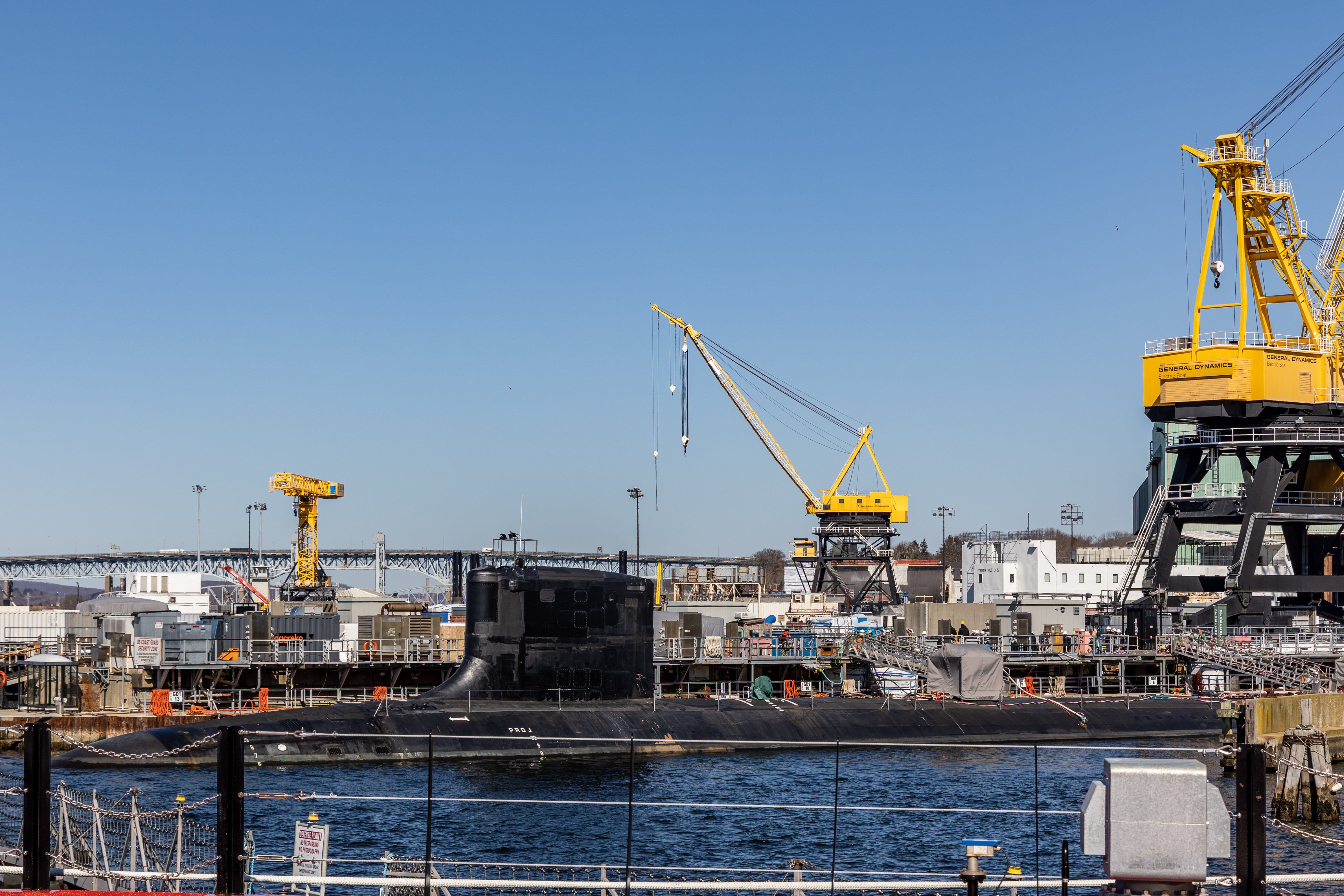
This post is part of a series looking back at the top naval stories from 2022.
This year saw the U.S. Navy moving down an acquisition path with more certainty than in 2021.
With the Biden administration embarking on its second budget cycle, the U.S. Navy released its first long-range shipbuilding plan in several years, providing more clarity to the industrial base on where the service is headed.
While the Navy still has multiple big-ticket acquisition programs on the horizon amid expected flat budgets, the service’s top civilian recently said he is pushing for a realistic approach to cost and mature systems in the pursuit of the DDG(X) next-generation destroyer, SSN(X) next-generation attack submarine, and Next Generation Air Dominance Program (NGAD).
“We ought to test those technologies out before we fully commit to producing ships, aircraft, submarines in far larger numbers. So, my hope, in the Department of the Navy and the Marine Corps, is that before we move forward with producing the next DDG(X), SSN(X) and NGAD, is that we have designed maturity on these platforms. That takes tremendous discipline on our part, not to rush to production … It’s going to take a lot of compromises, a lot of balance, to come up with the right answers,” Secretary of the Navy Carlos Del Toro told USNI news earlier this month.
“Let’s be realistic about how fast we should move forward before we’re ready to commit to a major [acquisition] program.”
Meanwhile, the Navy and Marine Corps started off the Fiscal Year 2023 budget cycle on different pages when it comes to amphibious ships but ended the year on more common ground.
Surface Ships
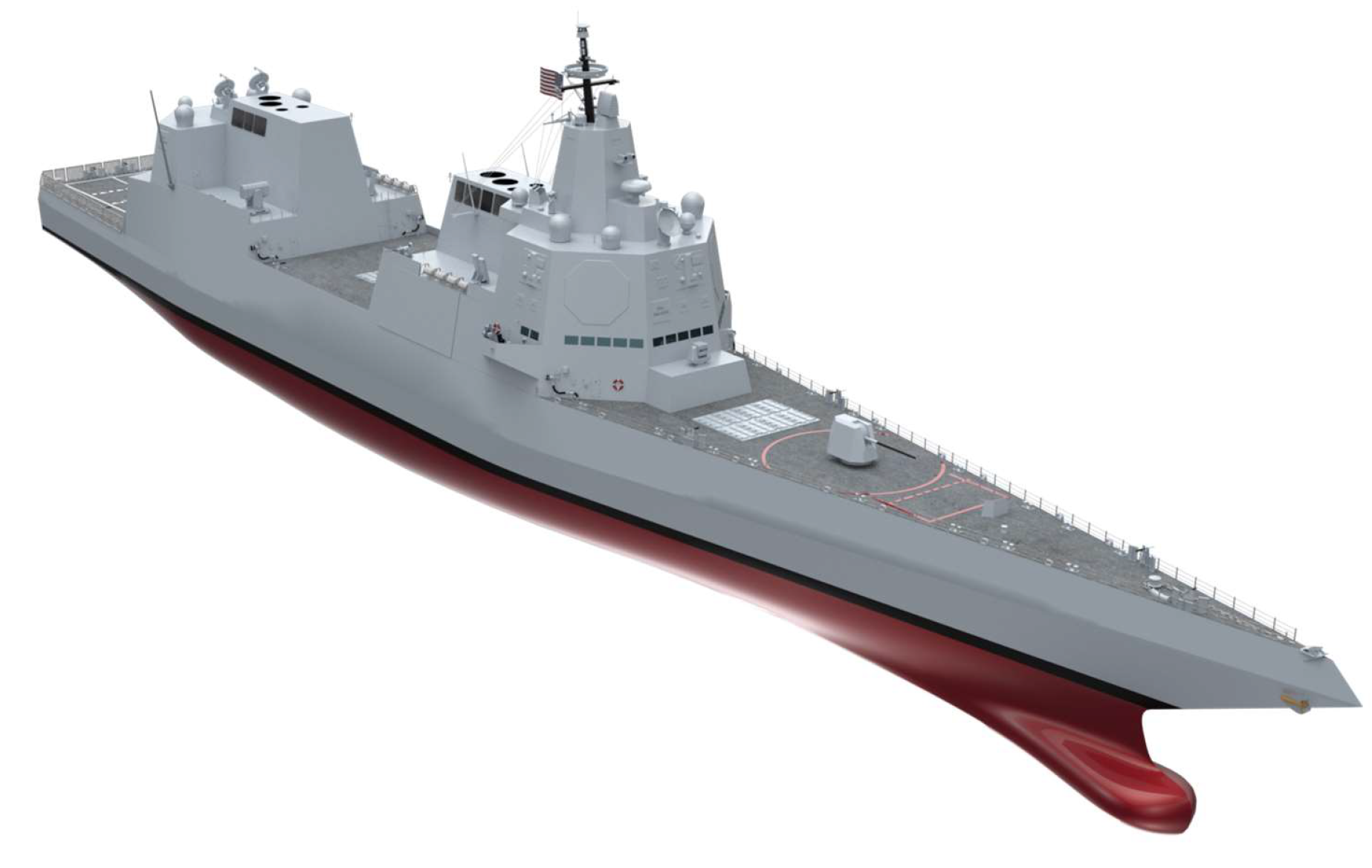
In its FY 2023 budget submission, the Navy asked to buy two Arleigh Burke-class destroyers and one Constellation-class frigate, continuing its steady purchase of both large and small combatants.
Congressional authorizers and appropriators approved and allotted funds for the Navy to buy three Arleigh Burke destroyers. But lawmakers are urging the Navy to buy more Flight III destroyers. The FY 2023 National Defense Authorization Act includes language giving the Navy Secretary the ability to ink another multi-year procurement contract for as many as 15 Flight III destroyers, which will provide a bridge as the Navy pursues its DDG(X) program.
DDG(X), which is in the research and development stages, will be a new hull that follows the Flight III Arleigh Burkes. The Navy is leading the design efforts with the help of General Dynamics Bath Iron Works and HII’s Ingalls Shipbuilding helping the service. The Congressional Budget Office’s recent projection estimates that the DDG(X) program could cost between $3.1 and $3.4 billion per hull.
Meanwhile, Fincantieri Marinette Marine in August began construction on the first Constellation-class frigate at its shipyard in Marinette, Wis. The start of fabrication – nearly two and a half years after the Navy issued the detail design and construction award – took some time so the Navy and Fincantieri could mature the design of the ship, Rear Adm. Casey Moton, the program executive officer for unmanned and small combatants, told reporters in August.
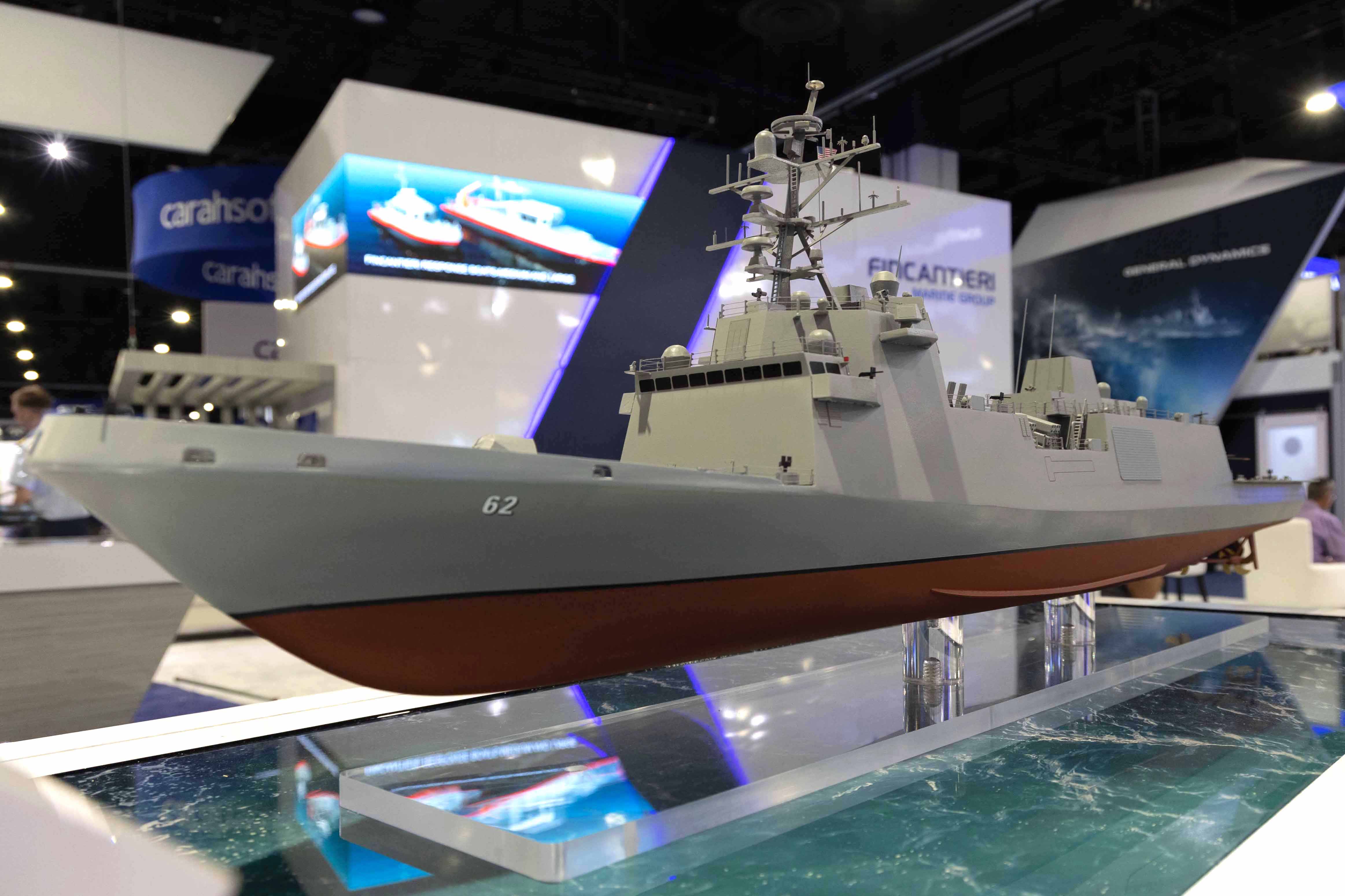
As for amphibious warships, in the FY 2023 budget proposal, the Navy sought to end the LPD-17 Flight II production line with LPD-32. Shortly after the president’s budget submission, the Marine Corps’ annual unfunded priorities list put LPD-33 at the top. While the Marine Corps uses the amphibious warships for various missions ranging from amphibious lift to crisis response, the funding to purchase the ships comes out of the Navy’s shipbuilding account.
The apparent disagreement between the Navy and Marine Corps led Congress to include provisions in the NDAA that would give the Marine Corps Commandant a direct say in amphibious ship requirements and fore structure.
“We can stop talking about what the requirement is year to year to year and talk more about what we can afford and how to use it and how to maintain it. Because the CNO wants to keep the LPD line hot also. You all know the reasons. We’re in 100 percent agreement there. What it does is stop talking about 31 or 35 or 38 – we know what the minimum is,” Marine Corps commandant Gen. David Berger said early this month when asked what the legislation would enable him to do now that he couldn’t do before.
The Marine Corps is also still focused on building its Light Amphibious Warship to shuttle Marines around islands and shorelines in the Indo-Pacific. But the services appear divided on the number of LAWs needed for the missions – the Marine Corps wants as many as 35 LAWs while Chief of Naval Operations Adm. Mike Gilday’s 2022 navigation plan calls for 18 vessels.
Submarines
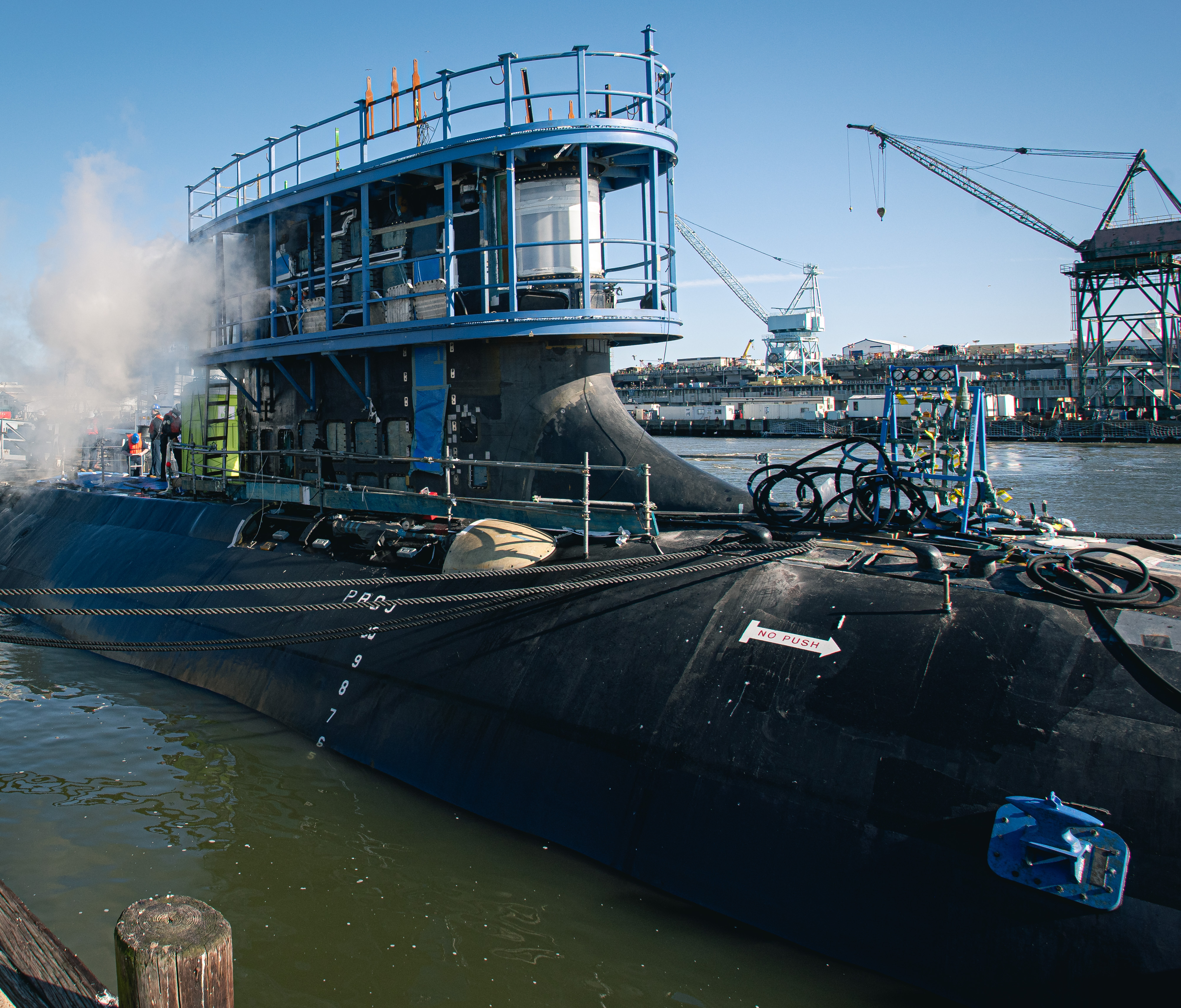
The Navy continued a steady acquisition of the Virginia-class attack boats, asking for two of them in the FY 2023 budget request. Lawmakers met that request in the FY 2023 NDAA.
Meanwhile, General Dynamics Electric Boat in June laid the keel for the lead boat in the Columbia-class ballistic missile submarine program.
The Columbia-class boats are slated to replace the Ohio-class boomers as the sea-based leg of the nuclear triad. As a cushion, the Navy is considering extending the lives of five Ohio-class nuclear ballistic missile submarines by three years so the service can meet surge requirements, USNI News previously reported.
“The riskiest period for them is in the 2030s as Columbias come online and the Ohios go out,” program executive officer for strategic submarines Rear Adm. Scott Pappano said in November at the annual Naval Submarine League symposium.
The research and development work for the next nuclear attack boat, or SSN(X), also continues. The Navy asked for $144 million in research and development funds for the future submarine, which is expected to resemble the Seawolf-class attack boats more than the Virginia-class, so it’s stealthier and faster to perform blue water operations and carry more torpedoes.
The CBO estimates that SSN(X) could cost between $6.2 and $7.2 billion per hull, while the Navy estimates it at $5.6 billion per hull.
Carriers
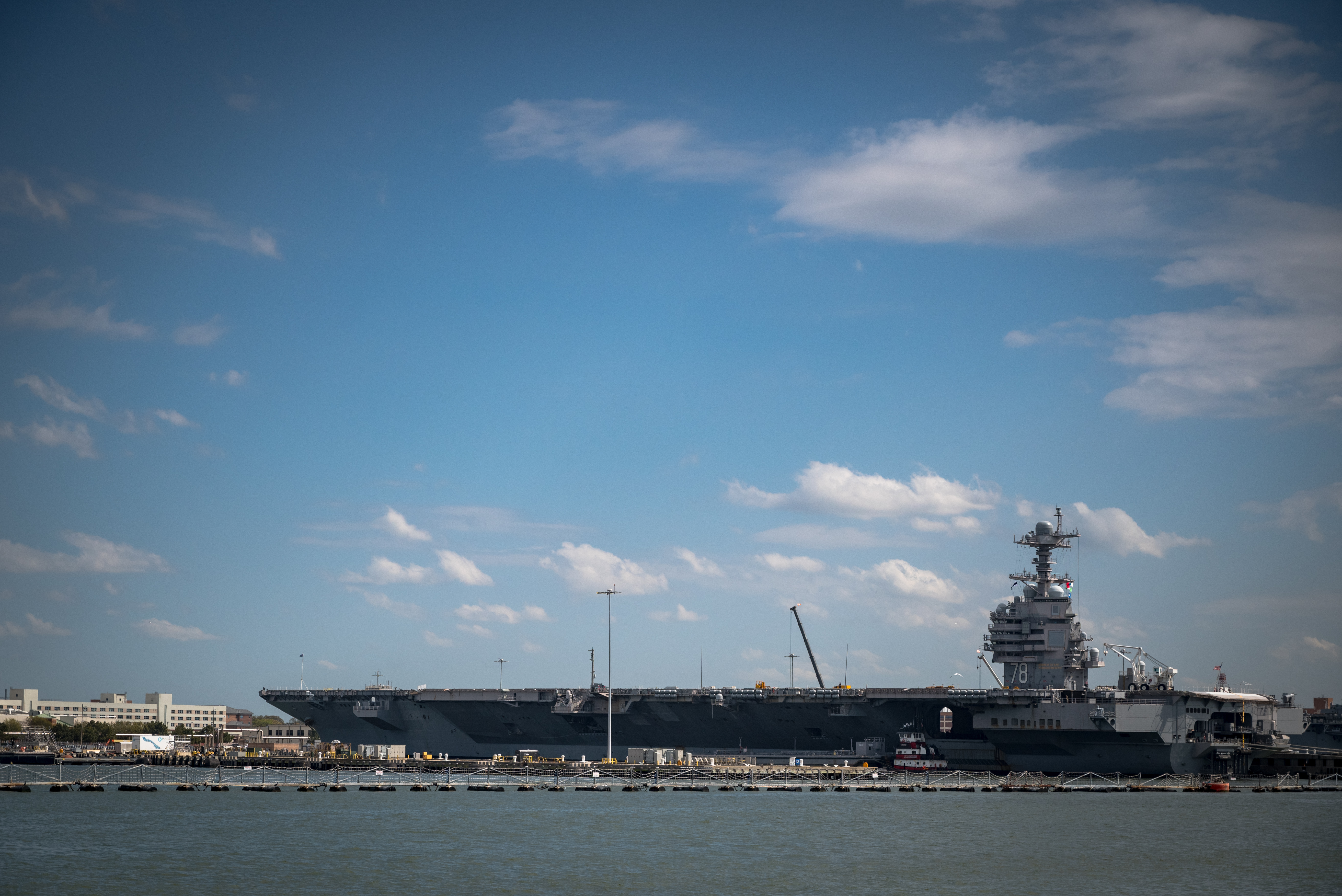
HII’s Newport News Shipbuilding, which builds the Navy’s aircraft carriers, had a record amount of aircraft carrier work at its shipyard this year.
At the start of the year, USS Gerald R. Ford (CVN-78), USS George Washington (CVN-73), and USS John C. Stennis (CVN-74) were all at Newport News for various maintenance availabilities. Meanwhile, John F. Kennedy (CVN-79) is in the final stages of construction at Newport News and slated to deliver to the Navy in 2024.
Enterprise (CVN-80) is in the early stages of construction, with HII laying the keel for the carrier in April, USNI News reported at the time. Enterprise is expected to deliver to the Navy in 2028.
The Navy purchased Enterprise as part of a block buy with future USS Doris Miller (CVN-81), which is slated for a 2032 delivery to the service.
Aircraft
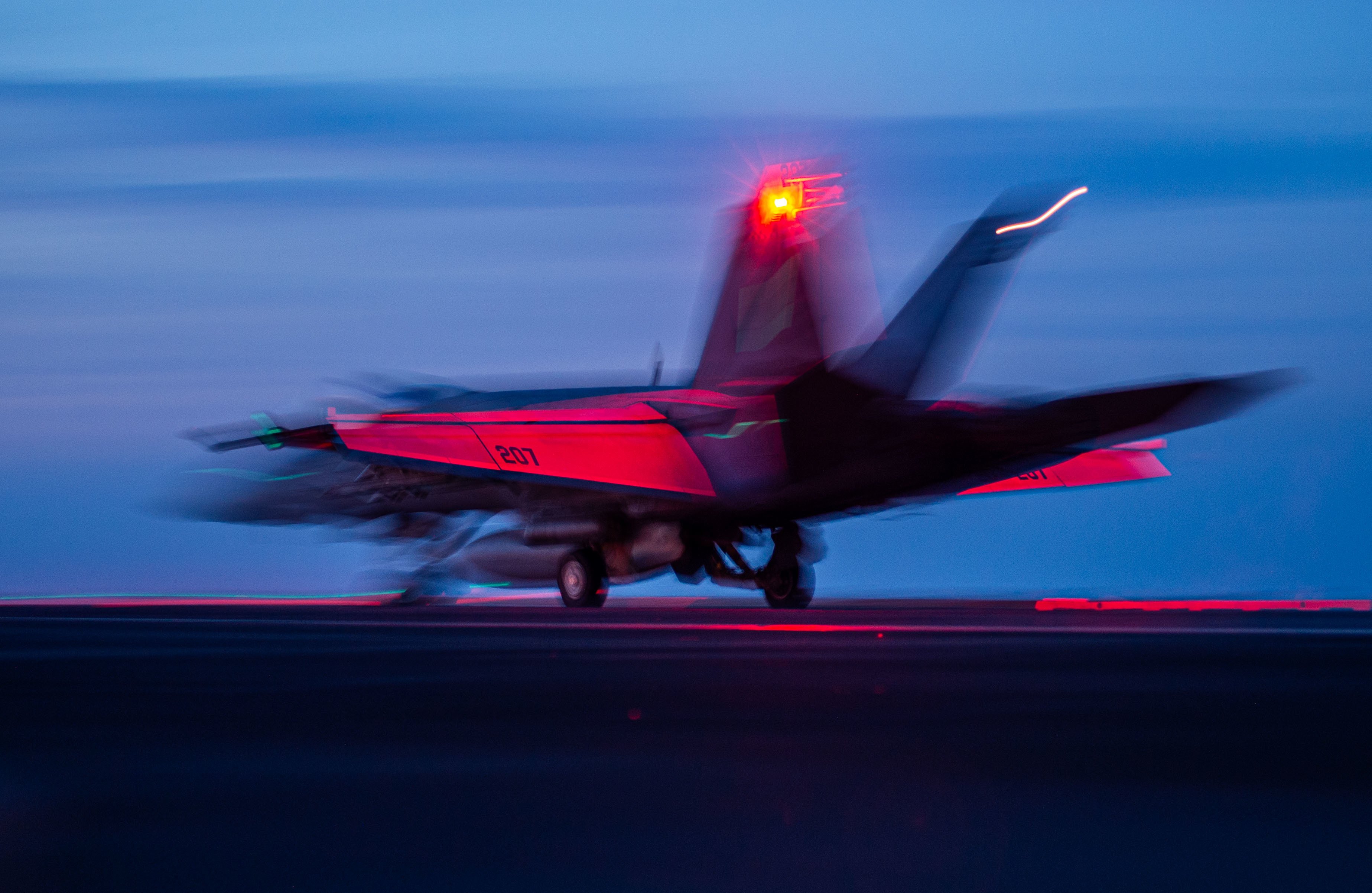
The Navy once again tried to end the F/A-18E/F Super Hornet production line so it could invest in modernization efforts. Service officials for the last several years have argued that the fourth-generation aircraft might not stand up to future advanced threats, while Congress has pushed for the Navy to continue buying aircraft off a hot production line.
Despite not asking for any Super Hornets in the FY 2023 budget request, Congressional authorizers approved funding for the Navy to buy eight Super Hornets. Authorizers also approved funding for 16 F-35C Lightning II Joint Strike Fighters, three more than the Navy’s initial request, and 15 F-35Bs for the U.S. Marine Corps. Appropriators also allotted funding for the Navy to buy eight Super Hornets.
Meanwhile, the Navy increased the amount of research and development dollars it’s spending on the Next Generation Air Dominance (NGAD) program, but kept the costs classified for the third budget cycle in a row.
“Although NGAD is a classified line, investments do go up over the [Future Years Defense Program] somewhat dramatically for NGAD,” Rear Adm. John Gumbleton, the Navy’s deputy assistant secretary for budget, said during a March budget briefing.
The idea is for the F/A-XX sixth-generation manned fighter to function as a “quarterback” for a network of manned and unmanned systems that would make up NGAD, which would extend the range of the carrier air wing.
“The NGAD [family of systems] will replace the F/A-18E/F Block II aircraft as they begin to reach end of service life in the 2030s and leverage Manned-Unmanned Teaming (MUM-T) in order to provide increased lethality and survivability,” according to joint testimony that Department of Navy acquisition officials submitted to Congress earlier this year. “F/A-XX is the strike fighter component of the NGAD FoS that will be the ‘Quarterback’ of the MUM-T concept, directing multiple tactical platforms at the leading edge of the battlespace.”
F/A-XX would succeed the Super Hornets when they start to retire in the 2030s.
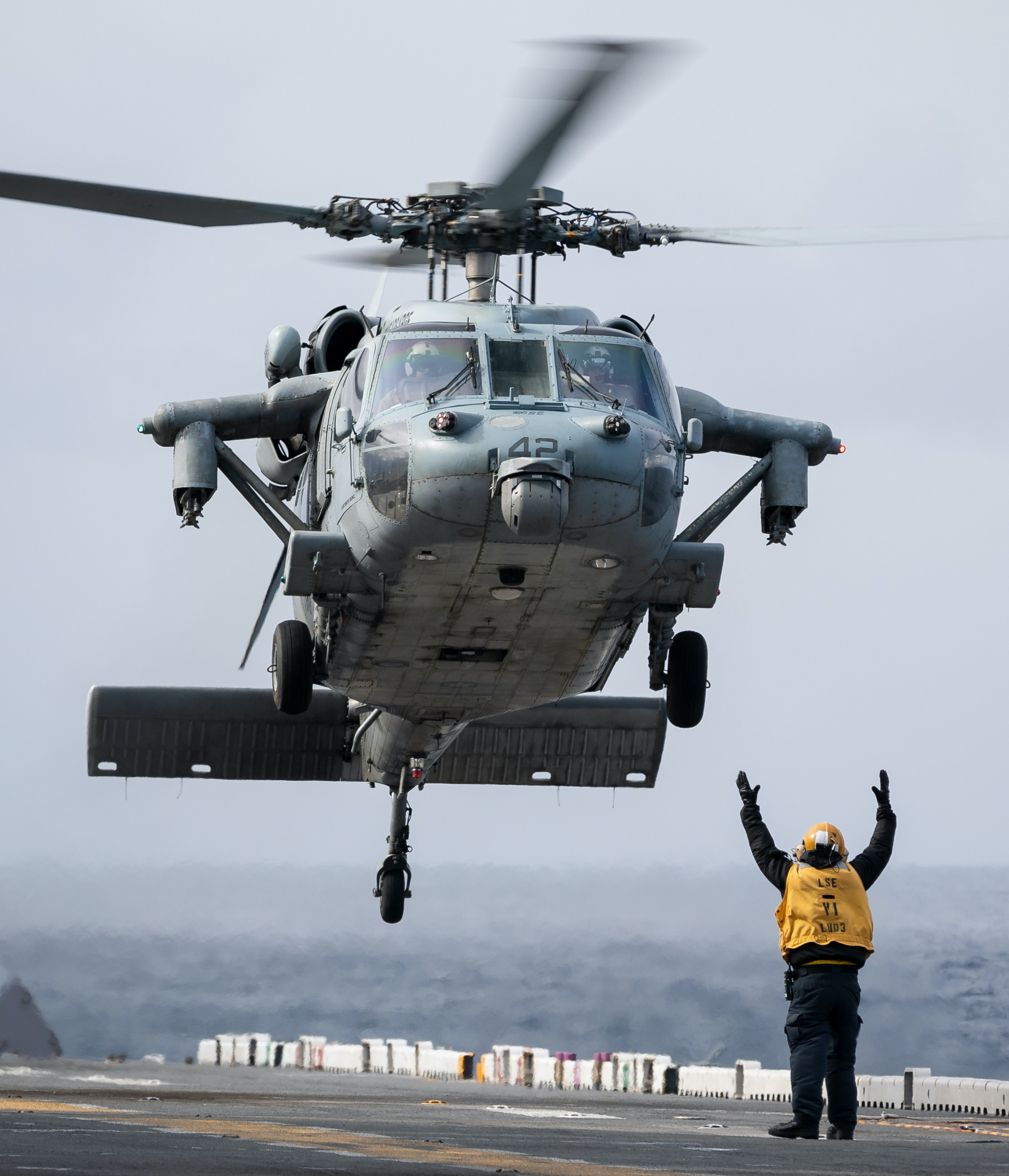
The Navy is also developing Future Vertical Lift maritime strike capability, a family of systems with both manned and unmanned platforms that will replace the MH-60R and MH-60S helicopters.
Earlier this year, Navy and Marine Corps officials said the respective requirements for each service’s future vertical lift capabilities were still under discussion, but that the two found some common ground when it comes to fleet logistics and the Navy’s Distributed Maritime Operations concept. The initiatives for each service to develop new rotary wing capabilities are contained in the same program office, though they may develop different requirements. For example, the Navy’s rotary wing aircraft need to operate off of frigates and destroyers more than Marine Corps helicopters.
“[T]he requirements are the key and where we have to diverge based on requirements is still being discussed, but I think going in that’s the plan with the Future Vertical Lift – a common site pictures on requirements and deviate only when we have to bring down costs of supporting and sustaining,” Rear Adm. Shane Gahagan, the program executive officer for tactical aircraft programs, said in February.
Unmanned Systems
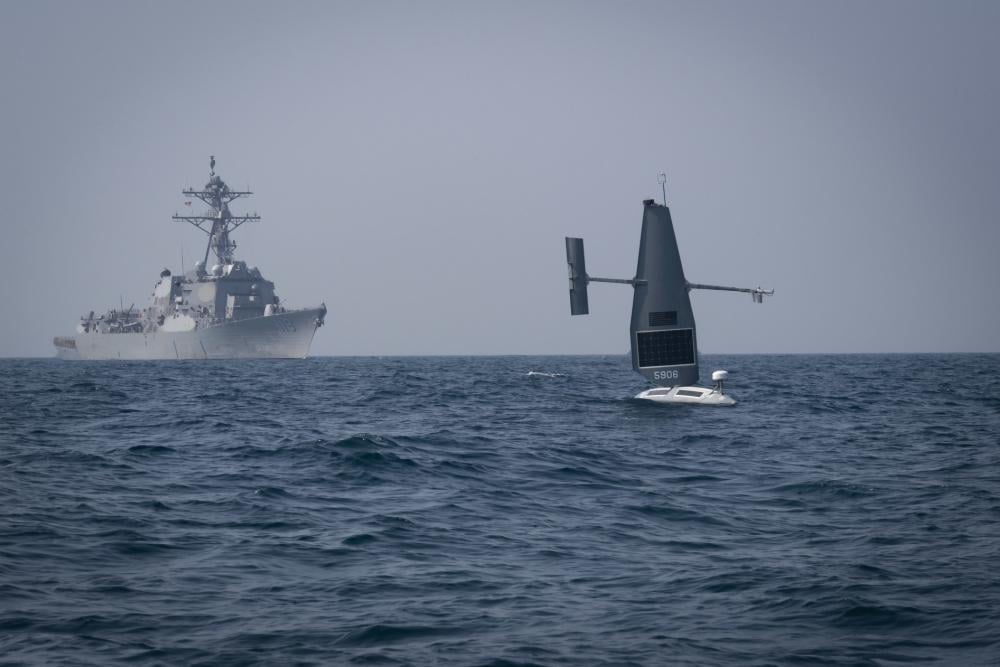
Navy officials this year continued to push for the need to divest legacy equipment so the service can invest in new platforms and modernize. This argument has been central to the Navy’s pursuit of unmanned platforms across all domains.
The Navy is testing autonomy capabilities with its fleet of USVs. In August, the Navy christened Mariner, its latest Ghost Fleet Overlord unmanned surface vehicle, which will head to the service’s San Diego, Calif.,-based Unmanned Surface Vessel Division One in the Fiscal Year 2023.
But the fate of the Medium Unmanned Surface Vehicle remains murky. Earlier this year, Gilday said he was rethinking the Navy’s plans for the MUSV after seeing U.S. 5th Fleet’s ongoing testing with smaller USVs.
Meanwhile, during this summer’s biennial Rim of the Pacific exercise 2022, the Navy paired its two Ghost Fleet Overlord test ships – Nomad and Ranger – and USV Sea Hunter and USV Sea Hawk with manned warships to test out the manned-unmanned teaming concept. Sea Hunter and Hawk are medium-sized USVs.
Rear Adm. Casey Moton, the program executive officer for unmanned and small combatants, said the testing at RIMPAC would help inform the Navy’s plans for the MUSV.

The Navy also continued its acquisition of the MQ-4C Triton, asking for three in the FY 2023 budget request, which Congressional authorizers met in the NDAA.
The FY 2023 submission also marked the Navy’s first purchase of its production MQ-25A Stingray unmanned aerial refueling tanker. The service asked for four MQ-25As, which Congressional authorizers also met in the defense policy bill.
The MQ-25As, which will take over the tanking mission from the F/A-18Fs, are slated to reach initial operational capability in 2025 and deploy aboard aircraft carrier USS Theodore Roosevelt (CVN-71) by 2026.
Shipbuilding Outlook
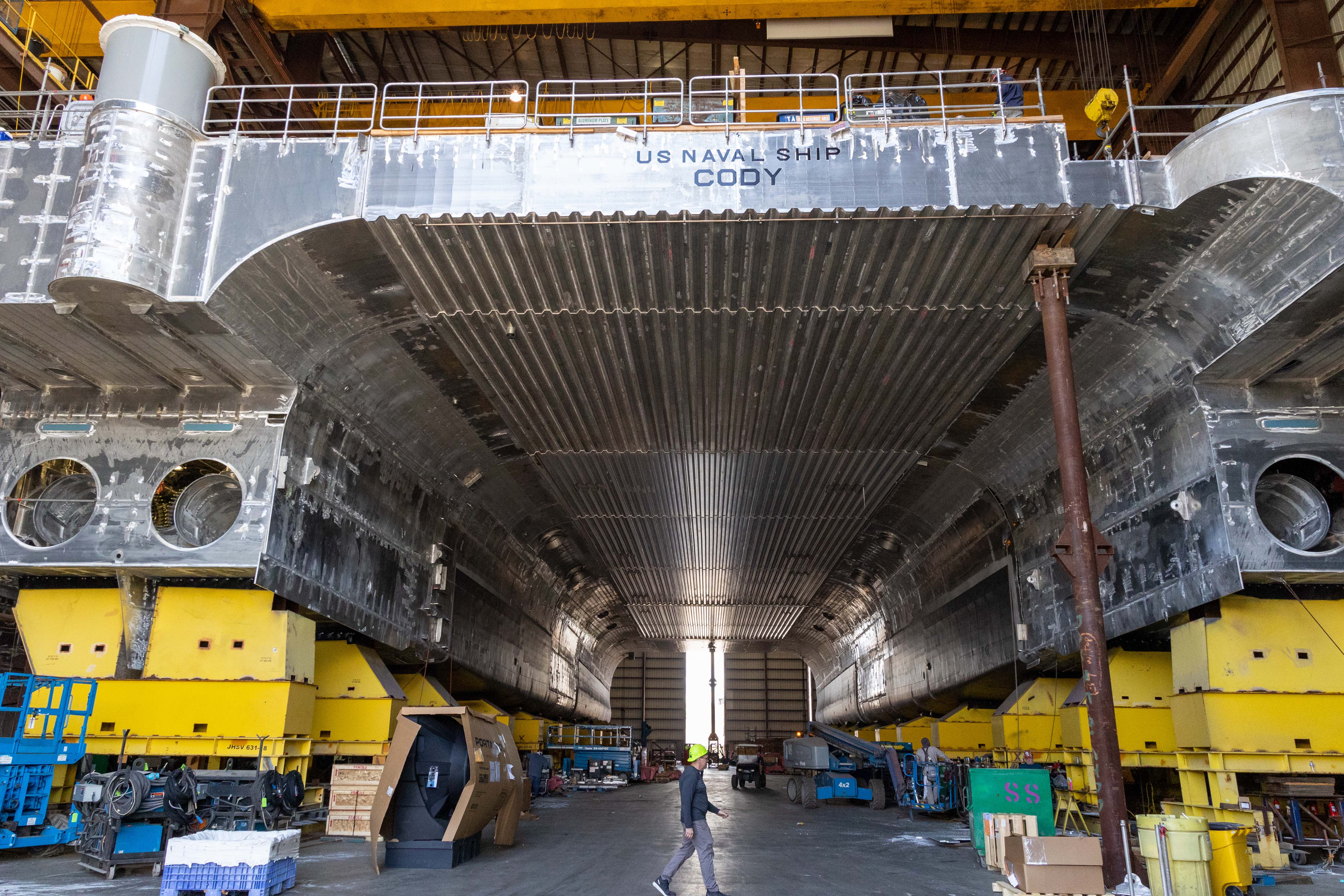
For the first time in several years, the Navy published a 30-year shipbuilding plan, providing a long-range outlook for its acquisition plans.
In a departure from previous long-range shipbuilding plans, the proposal included three alternatives for the years outside of the Pentagon’s Future Years Defense Program, or five-year budget outlook.
While the first alternative included a low-end funding profile that would yield an inventory of 316 ships by FY 2052, the third alternative featured a high-end funding profile yielding 367 ships by FY 2052. The second alternative – yielding 327 ships by FY 2027 – focused on building both attack submarines and the Columbia-class boats under the direction of the Pentagon’s office of Cost Assessment and Program Evaluation, USNI News previously reported.
While the 30-year shipbuilding blueprint provides insight on the Navy’s acquisition plans, Congress will ultimately get the final say. Lawmakers have criticized the Navy for pushing to decommission more ships than it plans to build in a given year. In FY 2023, the Navy sought to decommission 24 ships. Congressional authorizers rejected the proposal and prevented the service from decommissioning 12 ships in the FY 2023 NDAA.





